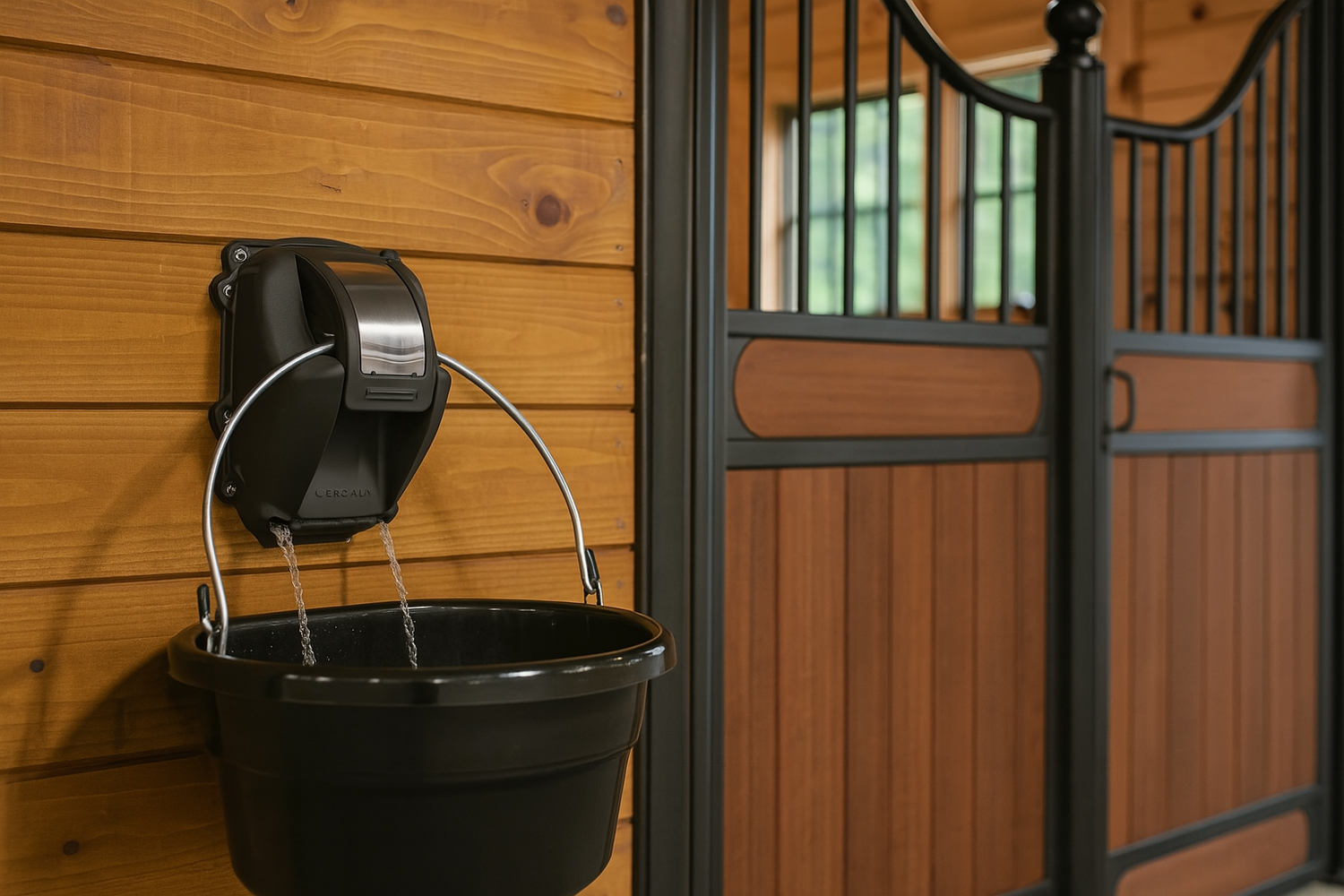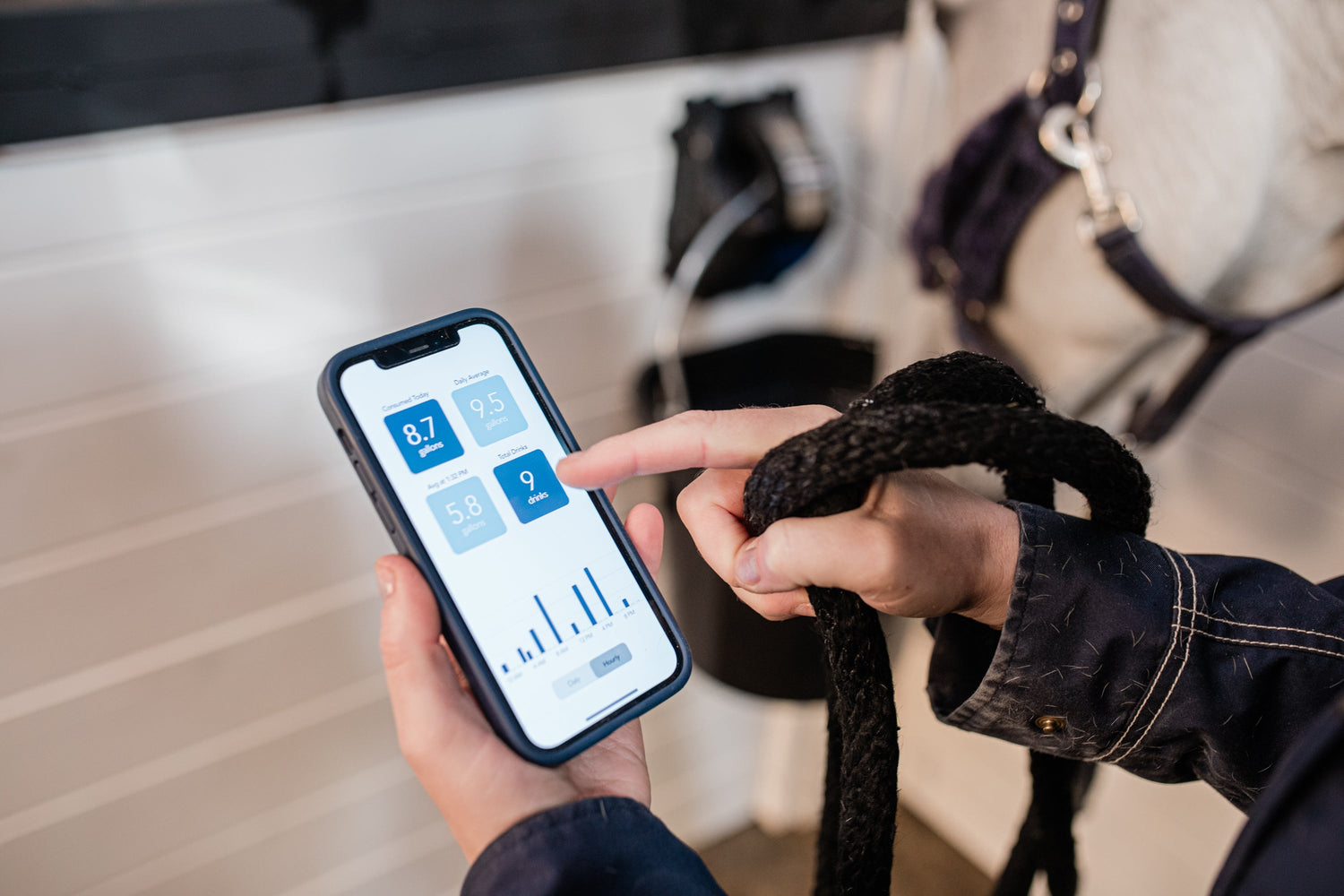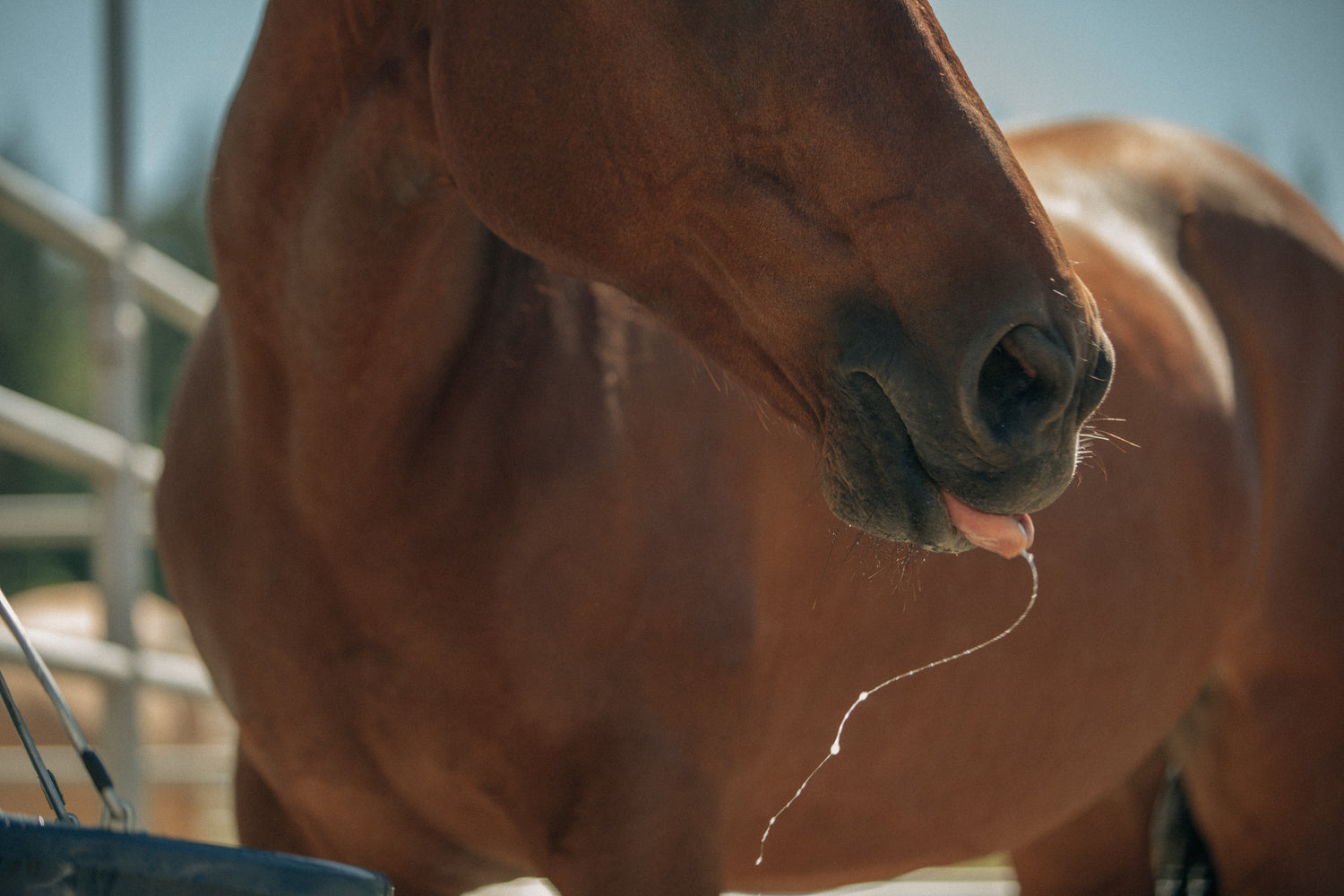Hydration is one of the most vital factors influencing a horse’s health and performance. Yet, tracking your horse's water intake can be a challenge.
Traditional methods, such as manually monitoring buckets or visual inspections, can be inconsistent and time-consuming. Enter modern technology, specifically the Cascada automatic waterer hydration tracking app, which provides invaluable insights into your horse's hydration habits.
Through these data points, horse owners can detect potential health issues early, optimize care routines, and ensure the well-being of their horses.
Let’s explore how tracking the amount of water your horse drinks can unlock critical health insights and improve overall care.
1. Identifying Early Signs of Dehydration
Consistent hydration patterns can help spot deviations that may signal dehydration. When a horse’s water intake drops, it can be an early sign of several health concerns, including colic, kidney issues, or infection. Hydration tracking allows owners to see these changes in real-time and take immediate action, before dehydration becomes dangerous.
For example, if your horse typically drinks around 10 gallons of water a day and suddenly drops to 5, an automatic waterer with tracking features can notify you. You can use data from your automatic horse waterer to consult with your vet and determine next steps, whether it’s a change in diet, water source, or further medical tests.
2. Monitoring the Effects of Weather on Hydration
Weather plays a huge role in how much water a horse needs. During hot weather, horses drink more to compensate for water lost through sweating. Conversely, in cold temperatures, horses tend to drink less, which can increase the risk of dehydration. With a hydration tracking system, such as those integrated into the Cascada auto waterer, owners can monitor how their horses' drinking habits fluctuate with the seasons.
This real-time data can help you adjust your horse’s care routine based on weather conditions. For instance, if it’s a particularly hot summer, you may need to ensure extra water is available or adjust electrolytes to encourage drinking. In colder months, hydration tracking alerts can help prevent dehydration from reduced water intake by prompting owners to ensure water is always fresh and free from ice.
3. Monitoring Health Issues with Drinking Data
A sudden or gradual change in water consumption can often indicate underlying health issues. When horses drink more or less than usual, it can be linked to conditions like kidney disease, metabolic disorders, or digestive problems such as colic. With horse hydration tracking, the system provides a clear picture of how much water your horse consumes, allowing you to identify unusual patterns over time.
For example, horses suffering from kidney issues may drink more water than usual as their body tries to compensate for fluid loss. On the other hand, horses with digestive upset or infection may drink less due to discomfort. Monitoring these changes can help you detect health problems before they become more severe.
4. Optimizing Hydration for Performance
Performance horses—whether in racing, dressage, or working roles—rely heavily on proper hydration for stamina, recovery, and overall physical well-being. Data from hydration tracking systems can give trainers and owners valuable insights into a horse’s hydration needs during training or competition. By tracking the horse’s water intake in real-time, owners can adjust their water supply and electrolyte intake based on performance and exertion levels.
For example, if a horse drinks significantly more after exercise than usual, it may indicate dehydration due to intense physical activity. Monitoring this allows trainers to modify training routines, increase fluid intake before and after workouts, and prevent dehydration from impacting the horse's performance.
5. Personalizing Hydration Plans
Not all horses are the same, and their hydration needs can vary based on factors such as age, size, diet, and activity level. You can check if your horse is dehydrated by monitoring their skin elasticity and body temperature, but tracking water intake per horse the easiest way to know if you have a healthy horse or not.
By tracking individual horse hydration with an automatic waterer, owners can create personalized hydration plans tailored to each horse’s specific needs. These plans can be adjusted over time as the horse’s health, diet, or activity levels change.
Data from hydration tracking with Cascada can help you determine how much water a particular horse should be drinking, based on baseline levels and real-time consumption. With personalized equine hydration tracking, you can optimize care, prevent issues, and promote overall health for your whole herd.
Why Hydration Tracking Is the Future of Horse Care
The shift towards automatic waterers with integrated tracking features is revolutionizing equine care. With traditional methods, horse owners would have to manually track water levels or rely on visual assessments of horse well-being to monitor hydration. Cascada hydration tracking provides the accurate water consumption data and real-time insights you need to provide your horse with the best possible care.
The Cascada automatic horse waterer offers several key features to improve hydration tracking:
- Real-time monitoring via the app.
- Instant alerts if there is a significant drop in water intake.
- Historical data to compare trends over time.
- Individual tracking for your whole herd.
- Multi-user access to the app
These features allow horse owners to be proactive in managing hydration, ensuring horses are getting the water they need to stay healthy and perform at their best.
Conclusion: The Power of Data in Horse Hydration
Hydration tracking has become a game-changer for horse owners who want to ensure their horses are receiving the proper hydration for their health and performance. Tracking drinking habits helps you spot early signs of dehydration and address problems before they become serious.
With the Cascada automatic horse waterer, you can track your horse's hydration. This technology helps you care for your horse better and makes horse management easier and more accurate than before.






